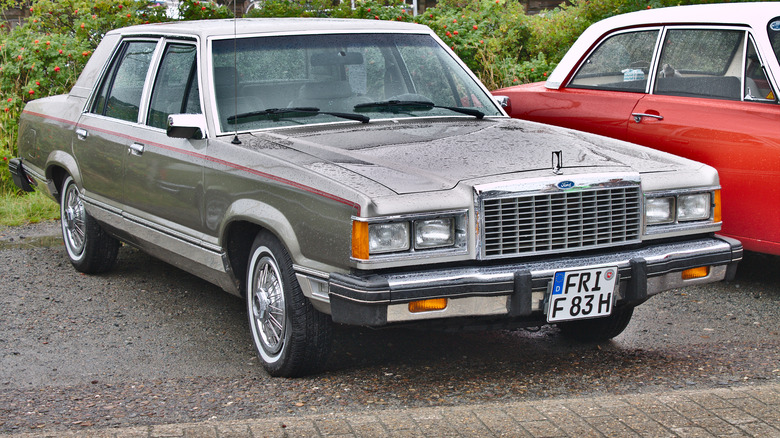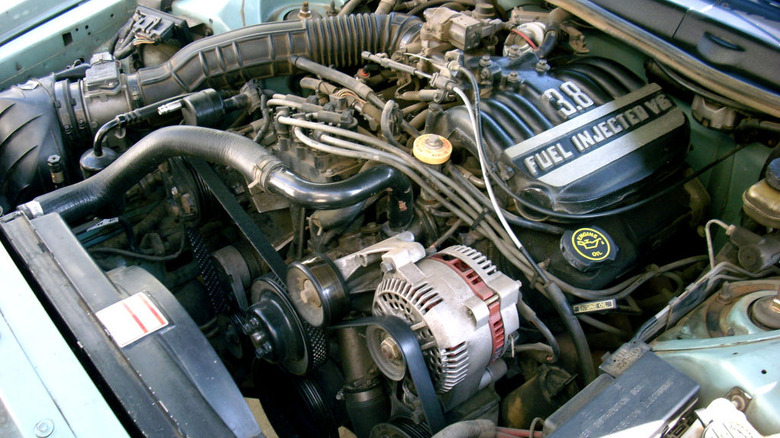How The Ford Essex V6 Engine Earned Its Notoriety
The 1973 oil crisis cannot be understated in how it affected how car companies wanted to develop their engines. With fuel prices skyrocketing, the mid-to-late 1970s was filled with automakers attempting to figure out how to maximize their engines' fuel efficiency along with making these engines lighter weight.
At the time, Ford's mid-size cars and smaller pickup trucks were being powered by a V8 engine, which was simply too much of a burden to keep around. So, in 1977, Ford decided it was time to make a change to the engines in those vehicles, and after years of development, they introduced the Ford Essex V6 engine in 1982. For the next 25 years, that V6 would become something of a staple in the Ford engine line.
The Essex engine takes its name from the Essex Engine Plant in Canada (as opposed to Ford's other Essex engine that takes its name from the county in England). According to a paper from SAE International, the main way the company was able to reduce the engine's size and weight was by utilizing mostly aluminum in its creation, such as for the engine block and cylinder heads. The engine also featured a 90-degree bank angle, which also contributed to reducing the size. However, aluminum costs began to rise, so after two years of development, they switched back to an iron block.
[Featured image by Jacek Rużyczka via Wikimedia Commons | Cropped and scaled | CC BY-SA 4.0]
Light but powerful
Even though they had to abandon the aluminum concept, the Ford Essex was still 117 pounds lighter than the 4.2 L V8 that had been used to power this size of vehicles at the time, making it the lightest V6 produced on the continent. That drastic decrease in weight didn't sacrifice any power, as SAE International reports that the Essex V6 was more powerful than Ford's V8.
The Essex V6 was introduced as an option for several different vehicles, such as the Ford Granada, Thunderbird, Cougar, and F-100, amongst others. For a comparison of the power between the Essex and a V8, let's just look at the Ford Thunderbird. A 1982 Ford Thunderbird with a 4.2 L V8 engine could generate about 120 hp. Meanwhile, the much lighter 3.8 L Essex V6 exists within the margin of error at 118 hp. Being able to get essentially the same horsepower on the same car with two very different engines showed quite a sign of progress.
The 3.8 L Essex would be a rather common engine across the Ford line for about 15 years, but as Ford phased out the F-100 in favor of bigger trucks, there needed to be some adjustment. So, in 1997, Ford introduced the larger 4.2 L Essex V6 for the F-150 and F-250 which would serve as those trucks' engines for a decade. The Essex engine may not have been flashy, but it did exactly what it needed to do, providing power more efficiently. When you can do that, it makes sense to keep it around for 25 years.

